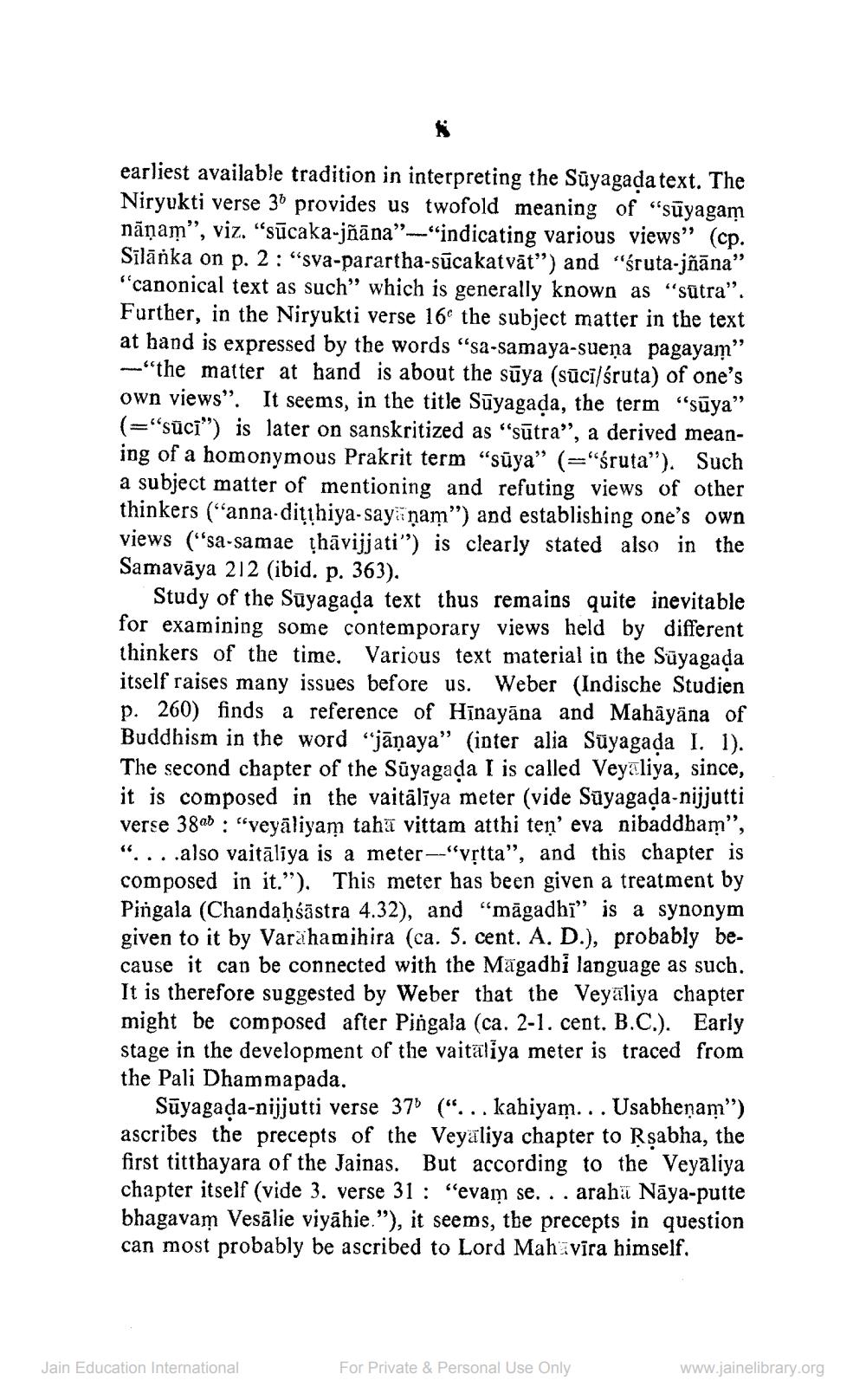________________
earliest available tradition in interpreting the Sūyagada text. The Niryukti verse 30 provides us twofold meaning of "sūyagam nāņam”, viz. "sūcaka-jñāna"-"indicating various views” (cp. Sīlāňka on p. 2 : “sva-parartha-sūcakatvāt”) and “śruta-jñāna" "canonical text as such” which is generally known as “sutra". Further, in the Niryukti verse 16° the subject matter in the text at hand is expressed by the words "sa-samaya-sueņa pagayam”
"the matter at hand is about the sūya (sūcī/śruta) of one's own views". It seems, in the title Süyagada, the term "sūya" (="sūcī") is later on sanskritized as "sūtra”, a derived meaning of a homonymous Prakrit term “sūya” (="śruta"). Such a subject matter of mentioning and refuting views of other thinkers (“anna dițihiya-saya ņam”) and establishing one's own views ("sa-samae thāvijjati") is clearly stated also in the Samavāya 212 (ibid. p. 363).
Study of the Suyagada text thus remains quite inevitable for examining some contemporary views held by different thinkers of the time. Various text material in the Süyagada itself raises many issues before us. Weber (Indische Studien p. 260) finds a reference of Hīnayāna and Mahāyäna of Buddhism in the word “jāņaya" (inter alia Süyagada I. 1). The second chapter of the Sūyagada I is called Veyaliya, since, it is composed in the vaitālīya meter (vide Süyagada-nijjutti verse 38ab : "veyāliyam taha vittam atthi ten' eva nibaddham", "....also vaitāliya is a meter-“vịtta", and this chapter is composed in it."). This meter has been given a treatment by Pingala (Chandaḥśāstra 4.32), and “māgadhị” is a synonym given to it by Varahamihira (ca. 5. cent. A. D.), probably because it can be connected with the Magadbi language as such. It is therefore suggested by Weber that the Veyaliya chapter might be composed after Pingala (ca. 2-1. cent. B.C.). Early stage in the development of the vaitaliya meter is traced from the Pali Dhammapada.
Sūyagada-nijjutti verse 370 (“... kahiyam. . . Usabheņam") ascribes the precepts of the Veyaliya chapter to Rsabha, the first titthayara of the Jainas. But according to the Veyaliya chapter itself (vide 3. verse 31 : “evain se... araha Nāya-putte bhagavam Vesālie viyāhie."), it seems, the precepts in question can most probably be ascribed to Lord Mahavira himself,
Jain Education International
For Private & Personal Use Only
www.jainelibrary.org




